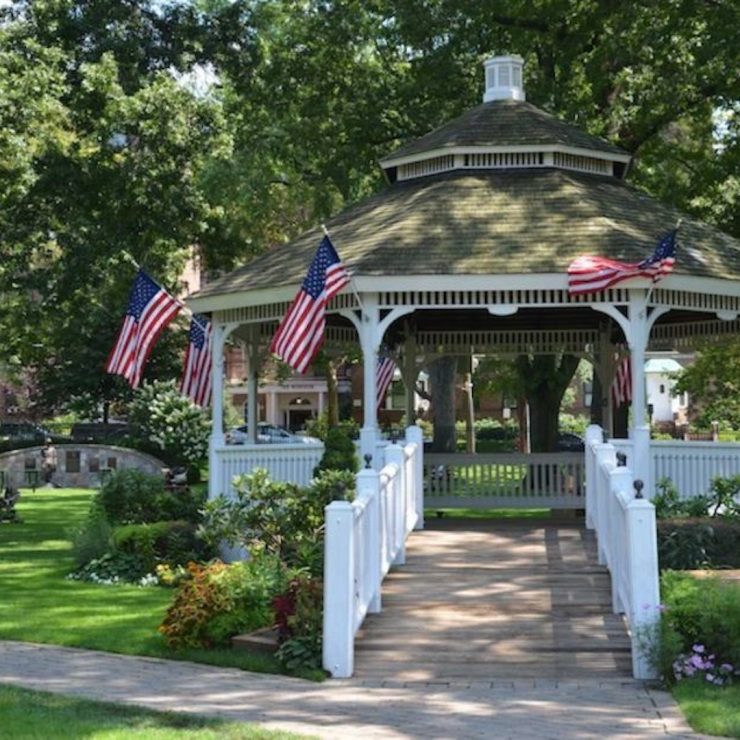
Best Safety & Security Practices for Seniors
Skilled caregivers can be a tremendous help in ensuring a senior’s safety at home, but you may still find yourself worried about things like falls and kitchen accidents, especially if the care you’ve arranged isn’t around-the-clock. It’s understandable when your loved one wants to age in place instead of moving to a senior community or facility. But no can blame you, either, if the notion is giving you some sleepless nights.
Fortunately, there are plenty of safety and security devices you can use to help your senior navigate his or her house. And here’s more good news: Many of these measures are less involved and expensive than you might think. We’ve asked leading experts for their recommendations. Some of their suggestions are for seniors who are still in good health; others are specifically for those with dementia. Pick the ones that work best in your situation and think about implementing them—your loved one’s days will be easier, and you will sleep more soundly!
Outside:
A porch mailbox or mail slot. If your loved one has always has to walk to the end of the driveway to retrieve the mail, now’s the time to move the mailbox closer to the house, says occupational therapist Scott Trudeau, Ph.D., who is the productive aging and interpersonal collaborative practice program manager for the Occupational Therapy Association. “You can also have the mail sent to a post office box, and arrange for a caregiver to retrieve it on a regular basis,” he adds.
Electric walkway lights. “The solar lights that you just stick in the ground are very popular, but they usually don’t give off enough light for a senior to see well at night,” warns Maria Wellisch, a registered nurse and vice president of corporate education at mmLearn.org, who often gives lectures on senior safety at home. “It’s a good thing to have walkway lights that are professionally installed instead,” she says. Good garage lighting is a must as well.
Doorway motion sensors. Know that pleasant bell you hear as you step into some stores? Think about installing one for your senior too, says Trudeau. It’s an easy way to know if she—or anyone else—is trying to enter or leave. For seniors with dementia, consider installing a slide lock that’s well above eye level, advises Wellisch. “When you’re elderly, you don’t often step back and look up,” she says. “Your loved one may not even see that lock, and will stay focused on the doorknob instead, until you or the caregiver can lead him away.”
In the Kitchen:
Lightweight cookware. Sure, mom’s always used a cast-iron roasting pan for her famous chicken, but it’s time to transition to something that’s easier to handle. “If she tries to take that heavy pan out of the oven and drops it, that’s a heck of a way to get burned,” says Wellisch. The pan could also land on a foot, injuring or breaking it—another good reason to make the switch. Many brands of lightweight stainless steel and ceramic cookware are available—“look for ones with handles that don’t conduct heat,” Wellisch recommends.
Stove knob covers. If a loved one has dementia and shouldn’t be cooking at all, these covers—the same type used in childproofing—can be a literal lifesaver. “Even if the senior turns the knob, the burner won’t be activated,” says Trudeau.
Cabinet slide-locks. These are childproofing staples as well, and can also help protect a senior with dementia, says Trudeau. “These locks loop through a pair of cabinet handles, keeping them together so the doors can’t open easily,” he explains. Use them to secure storage areas for cleaning products, small appliances, and the like. “A full-strength adult male could eventually snap a slide lock,” Trudeau notes, “but they’ll make so much ruckus doing it that a caregiver will be alerted.”
In the Bathroom:
A tub-side transfer bench. Walk-in bathtubs are expensive, says Trudeau, “and I have a lot of clients who say that the seal often links or they have mildew issues.” He favors a far less expensive strategy: putting a bench alongside the tub. “The senior can sit on the edge of the transfer bench, then turn, swing his legs over into the tub, and get in,” he says. “That makes a huge difference for folks, since they don’t have to lift their legs over the tub’s lip, which is normally 14 to 18 inches high.”
A shatterproof shower door. If your loved one has been relying on a shower curtain up till now, it’s time for an upgrade. “Shower curtains are terrible for older people,” Wellisch says. “If they start to fall, they instinctively grab the shower curtain for support. They end up falling anyway, and taking the whole thing down with them.”
Tub and toilet grab bars that are correctly. “I can’t tell you how many older people’s homes I’ve been in where I go into the bathroom and I see beautiful, expensive grab bars that are in exactly the wrong place,” says Trudeau. Have an occupational therapist work with your senior and come up with the right heights and angles for the bars.
A toilet seat in a contrasting color. “We lose our depth perception as we age,” explains Nancy Batchelor, an associate of nursing with a specialty in gerontology at the University of Cincinnati. A toilet seat that stands out from its surroundings can make bathroom visits easier for seniors.
Halls and stairways:
Contrasting wall and floor paints. This is another safety measure for seniors with diminished depth perception, says Batchelor. Differentiating walls and floors with bright colors can help them stay oriented and not walk into a wall or lose balance. Consider making the stairway walls their own color as well, a visual cue to remind an older person that they will be encountering steps.
Padding on stairwell landings. “If you have someone at a high risk of falls, it’s a smart safety move,” says Batchelor. Even young people can lose their footing (a great argument if the senior in your life objects to the change).
Other helpful items:
A 7-day pill organizer with daily pop-out boxes. The senior or caregiver can set out a new pill box each day, while putting the rest elsewhere. (Caregivers should use a locked storage area, of course, if the senior has dementia.) “This will help the senior or his caregiver keep track of the week’s medications. And if there seems to be a discrepancy, it will be limited to a single day’s pills. It’s much easier to reconcile what to do with poison control or the senior’s doctor,” says Trudeau.
A phone with photo inserts. These models allow you to put a photo or other image next to the speed-dial buttons. If a senior has weak eyesight, “she won’t have to put on her glasses to see which button is for 911—it can have a large image of an ambulance,” says Wellisch. You can also put your own and other family members’ pictures next to the speed-dial buttons that are preprogrammed to reach you.
Long-lasting light bulbs. “One of the biggest issues is seniors falling from everyday activities, like standing on a step-stool to replace a bulb,” says Batchelor. Switch out standard light bulbs with long-lasting LEDs, or even try placing press-on LED lights at roughly shoulder height.
Elastic shoelaces. “These turn a shoe into a slip-on,” explains Trudeau. “They cost about a dollar and are a valuable aid to many seniors—say those who suffer from vertigo, or have had a broken hip, or have difficulty bending at the waist.”
Emergency-alert necklaces or bracelets. These higher-tech devices—which allow a loved one to push a button and summon help when they’re sick or hurt–are worth the money, according to the experts. “What I always say to caregivers and patients is ‘We will be blessed if you never have to use it. But if you ever need to, we will be very glad you have it,’” shares Trudeau.
Find your peace-of-mind.
Explore LifeWorx’ in-home elder care services.
















